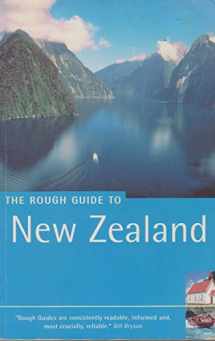
The Rough Guide to New Zealand
Book details
Summary
Description
INTRODUCTION
New Zealand comes with a reputation as a unique land packed with magnificent, raw scenery: craggy coastlines, sweeping beaches, primeval forests, snow-capped alpine mountains, bubbling volcanic pools, fast-flowing rivers and glacier-fed lakes, all beneath a brilliant blue sky. Even Kiwis themselves – named after the endearing, if decidedly odd, flightless bird that has become the national emblem – seem to be filled with astonishment at the stupendous vistas of what they like to think of as "Godzone" (God’s own country).
All of this provides a canvas for boundless diversions, from strolls along windswept beaches and multi-day tramps over alpine passes to the adrenalin-charged adventure activities of bungy jumping and whitewater rafting; in fact, some visitors take on New Zealand as a kind of large-scale assault course, aiming to tackle as many adventures as possible in the time available. The one-time albatross of isolation – even Australia is fifteen hundred kilometres away – has become a boon, bolstering New Zealand’s clean, green image, which is, in truth, more an accident of geography than the result of past government policy.
To a large extent New Zealand lives up to these expectations, and remains unfettered by the crowds you’d find elsewhere. What’s more, everything is easily accessible, packed into a land area little larger than Britain but with a population of just 3.8 million, over half of it tucked away in the three largest cities: Auckland, the capital Wellington, and the South Island’s Christchurch. Elsewhere, you can travel miles through steep-hilled farmland and rarely see a soul, and there are even remote spots which, it’s reliably contended, no human has ever visited.
Geologically, New Zealand split off from the super-continent of Gondwanaland early, developing a unique ecosystem in which birds adapted to fill the role normally held by mammals, many becoming flightless through lack of predators. That all changed around 1200 years ago when the arrival of Polynesian navigators made this the last major land mass to be settled by humans. On sighting the new land from their canoes, Maori named it Aotearoa – "the land of the long white cloud" – and proceeded to radically alter the fragile ecosystem, dispatching forever the giant ostrich-sized moa, which formed a major part of their diet. A delicate ecological balance was achieved before the arrival of Pakeha – white Europeans, predominantly of British origin – who swarmed off their square-rigged ships full of colonial zeal.
The subsequent uneasy coexistence between Maori and European societies informs both recorded history and the current wrangles over cultural identity, land and resource rights. The British didn’t invade as such, and were to some degree reluctant to enter into the 1840 Treaty of Waitangi, New Zealand’s founding document, which effectively ceded New Zealand to the British Crown while guaranteeing Maori hegemony over their land and traditional gathering and fishing rights. As time wore on and increasing numbers of settlers demanded to buy ever larger parcels of land from Maori, antipathy soon surfaced, eventually escalating to hostility. Once Maori were subdued, a policy of partial integration ensured the rapid dilution of their cultural heritage and all but destroyed Maoritanga – the Maori way of doing things. Maori, however, were left well outside the new European order, where difference was perceived as tantamount to a betrayal of the emergent sense of nationhood. Although elements of this still exist and Presbyterian and Anglican values have proved hard to shake off, the Kiwi psyche has become infused with Maori generosity and hospitality, coupled with a colonial mateyness and the unerring belief that whatever happens, "she’ll be right". However, an underlying inferiority complex seems to linger: you may well find yourself interrogated as to your opinions of the country almost before you leave the airport. Balancing this out is an extraordinary enthusiasm for sports and culture, which generate a swelling pride in New Zealanders when they witness plucky Kiwis taking on the world.
Only in the last couple of decades has New Zealand come of age and developed a true national self-confidence, something partly forced on it by Britain severing the colonial apron strings in the early 1970s, and partly by the resurgence of Maori identity. Maori demands have been nurtured by a willingness on the part of most Pakeha to redress the wrongs perpetrated over the last century and a half, as long as it doesn’t impinge on their high standard of living or overall feeling of control. More recently, integration has been replaced with a policy of promoting two cultures alongside each other, but with maximum interaction.
The uncertainties of this future are further compounded by extensive recent immigration, partly from south Asia but the majority from China and Korea.


We would LOVE it if you could help us and other readers by reviewing the book
Book review



